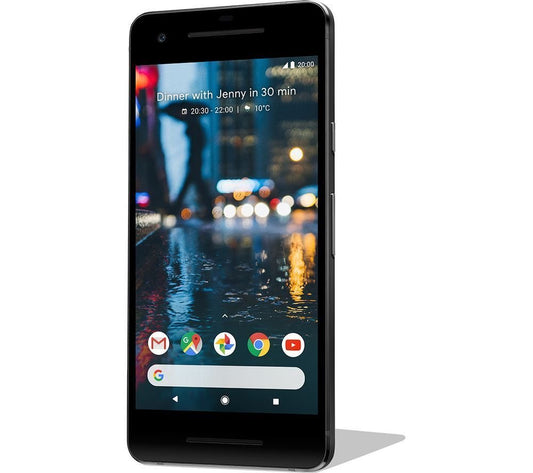Android 13 is here, and it's packed with exciting features and improvements. Whether you own a Google Pixel or another Android device, this guide will help you download and install the latest version. From enrolling in the beta program to troubleshooting common issues, you'll find everything you need to know about Android 13. Let's dive in and explore how to get your device up to date.
Key Takeaways
- Google Pixel devices can download Android 13 by checking for system updates in the settings.
- Other Android brands like Samsung, OnePlus, and Motorola will get the update later this year.
- Enrolling in the Android 13 beta program is an option for those who can't wait, but it comes with risks.
- Backing up data is crucial before downloading or installing any updates to prevent data loss.
- Android 13 introduces new features like improved privacy controls, enhanced customization, and a revamped media player.
Steps to Download Android 13 on Google Pixel Devices
Checking for System Updates
To get Android 13 on your Google Pixel device, start by checking for system updates. Navigate to Settings > System > System update and tap on Check for update. If the update is available, it will show up here.
Downloading and Installing the Update
Once you've confirmed the update is available, tap on the download button. The update will start downloading. Make sure your device is connected to Wi-Fi and has sufficient battery life. After the download is complete, follow the on-screen instructions to install the update. Your device will restart during the installation process.
Troubleshooting Common Issues
If you encounter any issues during the update, try the following steps:
- Ensure your device is connected to a stable Wi-Fi network.
- Restart your device and check for the update again.
- Clear the cache of the System update app.
If problems persist, visit the Google Support page for further assistance.
Enrolling in the Android 13 Beta Program
Eligible Devices for Beta Program
To join the Android 13 Beta Program, you need to have a compatible device. Google Pixel phones starting from Pixel 4 and newer are eligible. Other manufacturers like Samsung, OnePlus, and Xiaomi also have devices that support the beta program. You can find a complete list of supported devices on the [Android Beta Program website](https://www.google.com/android/beta).
Steps to Enroll in the Beta Program
- Go to the Android Beta Program website using your device's web browser.
- Sign in with the Google account linked to your Android device.
- Find your device in the list of eligible devices.
- Click on the "Enroll" button next to your device.
- Follow the on-screen instructions to complete the enrollment process.
Once enrolled, you will receive an over-the-air (OTA) update to download and install the latest beta release.
Risks and Precautions of Beta Testing
Participating in the beta program comes with certain risks. Beta versions can be unstable and may cause your device to malfunction. It is crucial to back up your data before enrolling. Unstable software can lead to data loss, so ensure you have a recent backup. Additionally, some apps may not be compatible with the beta version, leading to potential issues.
Before enrolling in the beta program, make sure to understand the risks involved and take necessary precautions to safeguard your data.
Downloading Android 13 on Non-Pixel Devices
Manufacturer-Specific Update Schedules
For those who don't own a Google Pixel device, the wait for Android 13 might be a bit longer. Different manufacturers have their own schedules for rolling out updates. Brands like Samsung, OnePlus, and Xiaomi usually release updates a few months after Google. It's essential to keep an eye on your device manufacturer's announcements to know when the update will be available.
Manual Installation via Manufacturer Websites
If you're eager to get Android 13 and don't want to wait for the over-the-air update, you can manually install it. Visit your manufacturer's website to download the update file. Follow the instructions provided to install the update on your device. This method requires some technical know-how, so proceed with caution.
Using Third-Party Tools for Installation
Another option is to use third-party tools to install Android 13. Tools like Odin for Samsung devices can help you flash the update manually. However, be aware of potential security risks and ensure you download tools from reputable sources. Using third-party tools can void your warranty and may lead to unexpected issues.
Always back up your data before attempting any manual installation or using third-party tools. This precaution can save you from losing important information if something goes wrong.
Backing Up Your Data Before Downloading Android 13
Before you download Android 13, it's crucial to back up your data to avoid any potential loss. This section will guide you through the importance of data backup, various methods to back up your data, and how to restore it after the update.
New Features in Android 13
Enhanced Customization Options
Android 13 builds on Google's Material You concept, offering deeper personalization. Users can now choose from 16 wallpaper colors and 16 basic colors, compared to the previous four options. Themed icons are also more prevalent, as Google encourages developers to create them, making your home screen more cohesive.
Improved Privacy Controls
Android 13 introduces several privacy enhancements. Apps requesting access to media files will now categorize them into images, videos, or audio files. The new photo picker allows you to specify which photos and videos an app can access, rather than granting access to your entire library. Additionally, clipboard history is automatically cleared after a certain period to protect your privacy.
New Media Player Features
The media player in Android 13 has been revamped. It now displays album artwork in the background and features a squiggly line to show progress through the track or podcast. The audio output picker has also been redesigned, making it easier to switch between connected speakers or headphones.
Reverting to Android 12 from Android 13 Beta
Steps to Opt-Out of Beta Program
If you want to go back to Android 12 from the Android 13 Beta, the first step is to unenroll from the beta. Head over to Google's Android Beta page, find your device, and click on the "Opt out" button. This will remove your device from the beta program and prompt an update to revert to the stable version of Android 12.
Data Wipe and Restoration
Opting out of the beta program will wipe all locally saved data on your device. Therefore, it is crucial to back up your data before proceeding. You can use Google Drive or any other backup service to save your important files, photos, and apps. Once the data wipe is complete, you can restore your data from the backup.
Reinstalling Android 12
After opting out and wiping your data, your device will prompt you to install the stable version of Android 12. Follow the on-screen instructions to complete the installation. Make sure your device is connected to a stable Wi-Fi network and has sufficient battery life to avoid any interruptions during the process.
Reverting to a stable version ensures a more reliable and smooth user experience, free from the bugs and glitches often found in beta versions.
Common Issues and Fixes in Android 13
Battery Drain Solutions
One of the most common issues users face after updating to Android 13 is battery drain. To mitigate this, try the following steps:
- Check for apps consuming excessive battery in Settings > Battery.
- Disable or uninstall apps that are draining the battery.
- Turn off features like Bluetooth and Wi-Fi when not in use.
- Use Battery Saver mode to extend battery life.
App Compatibility Problems
After updating to Android 13, some apps may not function correctly. This can be due to compatibility issues. To resolve this:
- Ensure all apps are updated to their latest versions.
- Clear the cache and data of problematic apps via Settings > Apps.
- Reinstall the app if issues persist.
Connectivity Issues and Fixes
Connectivity problems, such as Wi-Fi or Bluetooth not working properly, can also occur. Here are some steps to fix these issues:
- Restart your device to refresh connections.
- Forget and reconnect to Wi-Fi networks.
- Reset network settings via Settings > System > Reset options > Reset Wi-Fi, mobile & Bluetooth.
If you experience slow restarts after updating to Android 13, it may be due to multiple error messages or system processes taking longer to initialize. Patience is key, but if the problem persists, consider a factory reset as a last resort.
Conclusion
In conclusion, downloading Android 13 is a straightforward process for those with compatible devices. Whether you own a Google Pixel or another Android phone, the steps are clear and manageable. Remember to back up your data before proceeding, especially if you are considering the beta version, as it can be unstable. The new features and improvements in Android 13, from enhanced customization options to better privacy controls, make it a worthwhile update. Stay informed through your device manufacturer’s channels to know when the update will be available for your specific phone model. Embrace the new capabilities of Android 13 and enjoy a more personalized and secure mobile experience.
Frequently Asked Questions
How can I download Android 13 on my Google Pixel device?
If you have a Google Pixel phone (Pixel 4 and newer), you can download Android 13 by going to Settings > System > System update and tapping Check for update.
Which non-Pixel devices will get Android 13?
Non-Pixel devices from brands like Samsung, Asus, Nokia, OnePlus, Oppo, and others will get Android 13 later this year. Check your manufacturer’s website for specific dates.
What should I do before installing Android 13?
Before installing Android 13, it's important to back up your data. You can use Google Drive or another backup service to save your photos, contacts, and other important files.
How do I enroll in the Android 13 Beta Program?
To enroll in the Android 13 Beta Program, visit Google's Android Beta page, find your device, and follow the instructions to sign up. Remember, beta versions can be unstable.
Can I revert to Android 12 after installing Android 13 Beta?
Yes, you can revert to Android 12. Go to the Android Beta page, find your device, and click Opt out. This will erase all data on your device, so make sure to back up your data first.
What are some new features in Android 13?
Android 13 includes new customization options, improved privacy controls, and a revamped media player. You can also expect better performance and enhanced security features.








